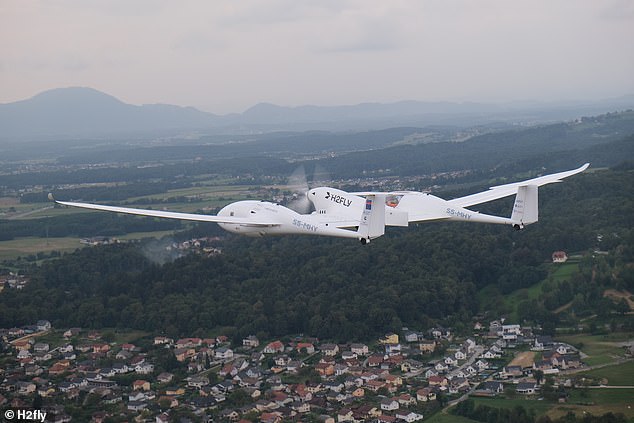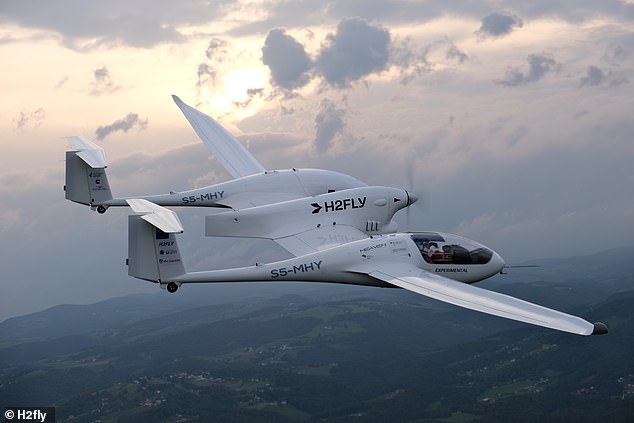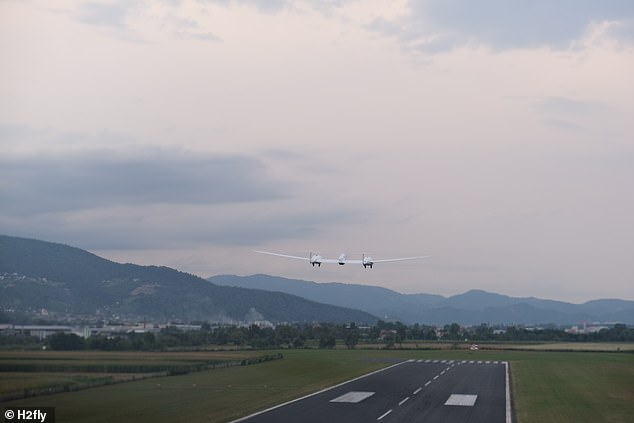Watershed moment for aviation: World’s first piloted flight in a plane powered by liquid hydrogen takes place
The ‘hydrogen barrier’ has been broken.
At a watershed moment for aviation, the world’s first pilot flights of an electric aircraft powered by liquid hydrogen have taken place.
H2flya developer of hydrogen-electric propulsion systems for aircraft based in Stuttgart, Germany, has announced that its HY4 aircraft – equipped with a hydrogen-electric fuel cell propulsion system and cryogenically stored liquid hydrogen – has completed four flights, including one that took more than three flights. lasted. o’clock.
The hydrogen plane took off from Maribor in Slovenia and “saw safe and efficient operation during multiple test flights,” H2fly said in a statement.
It continued: “The test flight results indicate that the use of liquid hydrogen instead of gaseous hydrogen will double the maximum range of the HY4 aircraft from 750 km (466 miles) to 1,500 km (932 miles), which is a crucial means a step towards the provision of zero-emission commercial medium-haul and long-haul flights.’
H2fly, a developer of hydrogen-electric propulsion systems for aircraft based in Stuttgart, announced that its HY4 aircraft has completed four flights, including one that lasted more than three hours. The photo above shows the aircraft during one of these test flights
H2fly explained that the use of liquefied, cryogenic hydrogen, compared to pressurized gaseous hydrogen storage, allows for significantly lower tank weights and volumes, leading to longer aircraft range and greater payload.
Professor Josef Kallo, co-founder of H2fly, said: ‘This achievement marks a turning point in the use of hydrogen to power aircraft. Together with our partners, we have demonstrated the viability of liquid hydrogen to support zero-emission mid- and long-haul flights.
“We are now looking ahead to scaling our technology for regional jets and other applications, and embarking on the critical mission of decarbonising commercial aviation.”
Airline easyJet and manufacturers Airbus and Rolls-Royce are part of the new Hydrogen in Aviation (HIA) alliance and are calling for more attention to hydrogen as a way to decarbonise air travel.
The alliance believes Britain can become a world leader in the development of hydrogen-powered flights if the government invests in a ten-year research programme, supports the provision of infrastructure and ensures the required regulatory regime is in place.
It is stated that hydrogen as a jet fuel could generate an annual benefit of £34 billion for Britain by 2050.
The only waste product of using hydrogen as a fuel is water, raising hopes that this could power commercial aircraft without causing carbon emissions.

The hydrogen plane (above) took off from Maribor in Slovenia and “saw safe and efficient operation during multiple test flights”
EasyJet chief executive Johan Lundgren said: “There is no doubt Britain has the potential to become a world leader in hydrogen aviation, which could bring an annual boost of £34bn to the country’s economy by 2050 . This opportunity requires rapid change and now is the time to take action.
“We need to work together to provide the radical solutions needed for a hard-to-combat industry like aviation, so that we can protect and maximize the benefits it brings to the UK economy and society, and we know that UK consumers want to be preserved.
“HIA looks forward to working with the UK Government to ensure that the appropriate funding, regulatory and policy changes are made to accelerate the achievement of zero carbon aviation.”

Professor Josef Kallo, co-founder of H2fly, said: ‘This achievement marks a turning point in the use of hydrogen to power aircraft’

H2fly explained that the use of liquefied, cryogenic hydrogen, compared to pressurized gaseous hydrogen storage, allows for significantly lower tank weights and volumes, leading to longer aircraft range and greater payload.
Airbus Chief Technology Officer Sabine Klauke said: “As Airbus continues to develop the aircraft technologies needed to enable hydrogen-powered flights, a unified industry voice is needed to secure a robust ecosystem of renewable hydrogen.
“Joining our colleagues across the UK aviation landscape in a focused approach to policy and investment action brings us closer to a carbon-free future of flying.”
Rolls-Royce Chief Technology Officer Grazia Vittadini said: “Collaboration is critical when it comes to achieving our net-zero ambitions as an industry, which is why we are proud to be part of the Hydrogen in Aviation alliance.
“Our contribution to HIA is the ability and experience we have in pioneering new technologies and solutions – we have already tested a modern aircraft engine on green hydrogen and we are convinced that this is one of the solutions that will help aviation in the medium term. to long term will help decarbonise. -term.’
